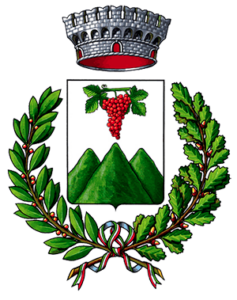
Bono
Bono is a town in the Marghine range that rises on the slopes of Mount Rasu.
It is part of the Goceano sub-region, which corresponds to the Curatoria del Goceano in mediaeval times. The ‘Sos Nibberos‘ forest, named a natural monument, rises in the land. While walking through the town centre at Piazza Bialada, one is able to see a mural commemorating the epic fight of the anti-feudal uprisings, complete with the statue of Alternos. The parish church of Bono is the church of Saint Michael the Arch Angel, which was erected at the end of the 13th century with a 14th-century pink trachyte façade.
The Angioy family
Don Pietro Nicolò Angioy, an Orani native, wed Margherita Arras, a wealthy Bono family member. Despite having noble origins, the dynasty stood out in Goceano for its extraordinary work ethic: rather than being a “small rural nobility,” as history has frequently described it, it was a family of independent, vibrant, and hardworking landowners who attained their wealth via hard effort.
Giovanni Maria Angioy’s early years
Giovanni Maria Angioy and his brother Nicolò grew up in the Goceano capital, a childhood tragically interrupted by their mother’s untimely death. Their maternal uncle, Don Taddeo Arras, was a teacher who kept a close eye on them during their formative years and taught them the fundamentals of reading, writing, and maths. At some point in his life, their father likewise abandoned the two children, preferring the monastic life. Their father also abandoned the two kids at one point in his life because he preferred living as a priest.
The two brothers fulfilled their goals after being influenced by their uncle Thaddeus to pursue their studies: Nicolò was ordained as a priest and vicar of the Nuoro diocese, while Giovanni Maria began a career as a university lecturer and magistrate following years of legal study and practise. He was appointed to the Reale Udienza, the highest court in the Kingdom of Sardinia.
Bono and Goceano defend the island
Angioy was one of the city’s defenders in 1793 when the French fleet was getting ready to take Cagliari, the capital of the Kingdom of Sardinia. He deployed almost 300 cavalrymen from Goceano, a small troop that provided support to the royal army. The military state organised and funded the majority of the armed troops that waged the war against the French. The most significant outcome of the ‘patriotic war’ was the gathering of the three Estates of the Sardinian Parliament in the spring of 1793, which resulted in the compilation of the famous five demands. They explicitly petitioned the King for acknowledgment of the dignity of the Sardinians and Sardinia, which had been saved from a terrible invasion.
The siege of Bono
The revolutionary uprisings that characterised the three-year period from 1794 to 1796 were followed by a harsh, heated, and implacable repression by the royal government. The still pulsating anti-feudal movement suffered a severe blow. In Bono, the iconic villa of the movement since it was Angioy’s homeland, no less than 900 armed men, commanded by Efisio Pintor Sirigu, brought the population to its knees, even going so far as to strip the churches of their sacred furnishings.
Sa corcoriga
Professor of contemporary history at the University of Cagliari's Faculty of Political Science, Girolamo Sotgiu, stated that the people of Bono drove the assailants "into a precipitous retreat in which many were killed and wounded." The historical events are being reenacted in Bono on August 31 today. The village knights join the flower- and reed-decked chariot as it reaches a hill, whereupon they engage in a frenzied race between two wings of the audience. A big pumpkin, known as "sa corcoriga," is rolled down the hillside path with the arrival of the final rider, symbolising the troops' loss and mockery.
The origin and ultimate fate of Angioy's aspirations
The remarkable thing about the commendation that Abbot Berlendis bestowed upon the two Angioy brothers, young Bonesi university students in Sassari, is that despite their academic prowess, they were from an inland rural village rather than an urban setting like Cagliari or Sassari, where there is a known presence of intellectuals and libraries.
Giovanni Maria Angioy’s lineage may be traced back to his mother’s side in Arras and his father’s side in Orani. The Arras family, like many other powerful pastoral families, was granted noble patents in the early 1700s. One of the factors that gave Angioy a huge following for his activities in various villages was the ripple effects these had in several towns in central-northern Sardinia, up to the two main cities. Bono and the other Goceano villages, including Anela, Benetutti, Bottidda, and Bultei, made a major contribution to the Angioyan army’s increase in numbers. However, as is often the case with significant historical events, this coherence fell apart as the Alternos’ finances sank. After the frantic days from the 18th to the 21st of July 1796, when the Bonesi heroically resisted the siege of Pintoreddu’s troops and subsequently counter-attacked the viceroy troops, in Angioy’s homeland too, a rift broke out between his loyalists, when a faction, dominated by Giacomo Fara and Bonifacio Cocco, switched to the Royalist camp, causing serious tensions that culminated in the murder of Don Andrea Mulas Rubatta, a tenacious Angioyan, on 9 February 1798.
A violent spiral of assaults, attempted murders, and livestock thefts befell Bono. This dispute was resolved in 1799 at the Savoy court’s Cagliari settlement. The shrewdness of Judge Valentino was demonstrated when he ordered the return of some of Angioy’s most devoted friends, Salvatore Frassu and Felice Mulas Rubatta, from exile, and when he put an end to bullying Don Giacomo Fara, who had become the Alternos’ enemies’ point of reference following Angioy’s past.
Bibliography
L. CARTA, Il Settecento e gli anni di Angioy (1700-1799), Sassari, La Nuova Sardegna, 2011, pp. 147; 213
F. CASULA, Carlo Felice e i tiranni sabaudi, Dolianova, Grafica del Parteolla, 2019, pp 46-48
A. MORI, Sardegna, Torino, Unione Tipografico-Editrice Torinese, 1966, p 527
M. PINNA (a cura di) Bono e il suo territorio, Sassari, Edes, 2017, pp.119-126
Bibliografia web
https://www.sardegnaforeste.it
https://archiviostorico.unica.it/persone/angioy-giovanni-maria
https://www.comune.bono.ss.it
Credits
M.L. Melas, A. Nasone, S.A. Tedde

